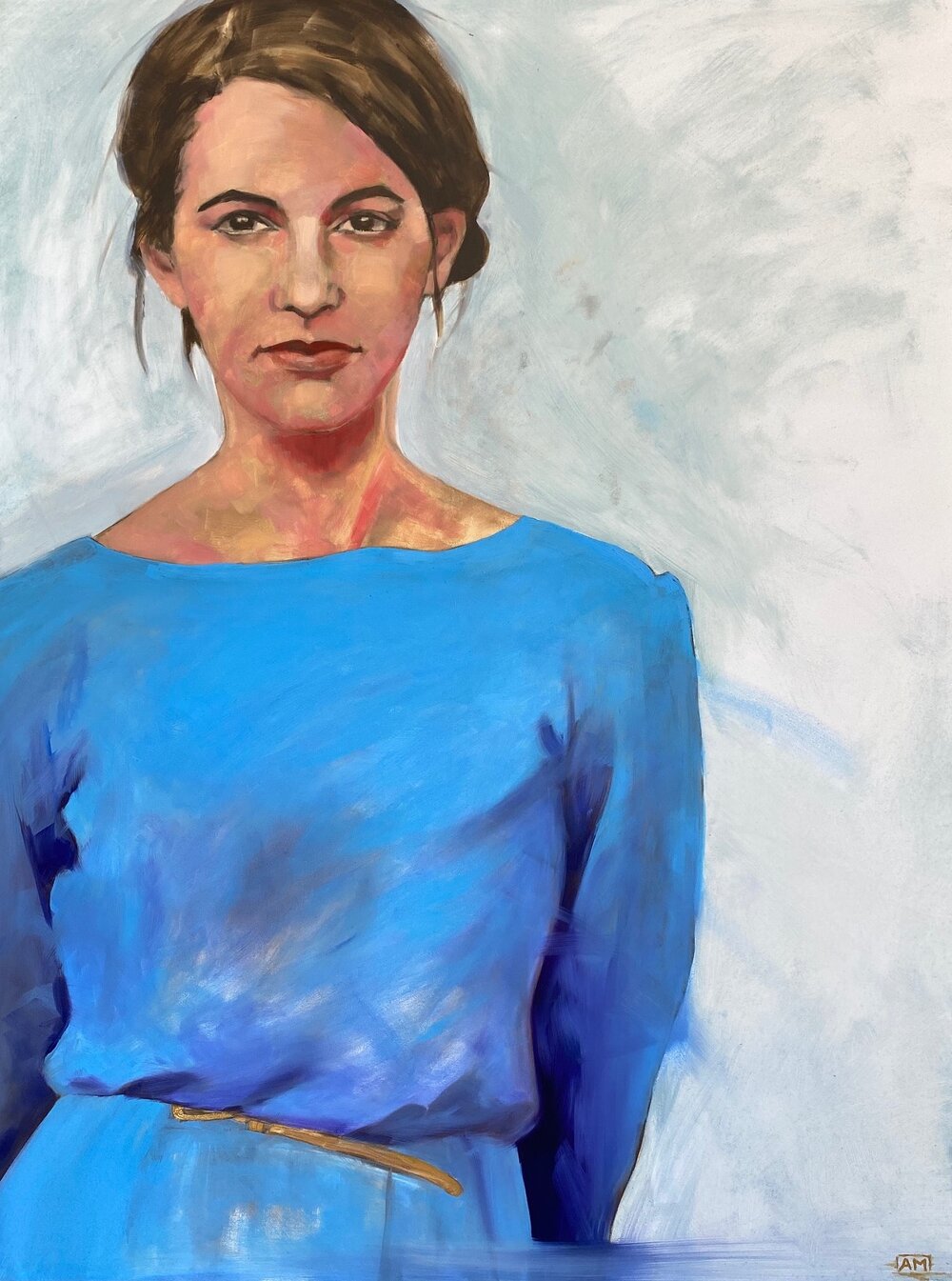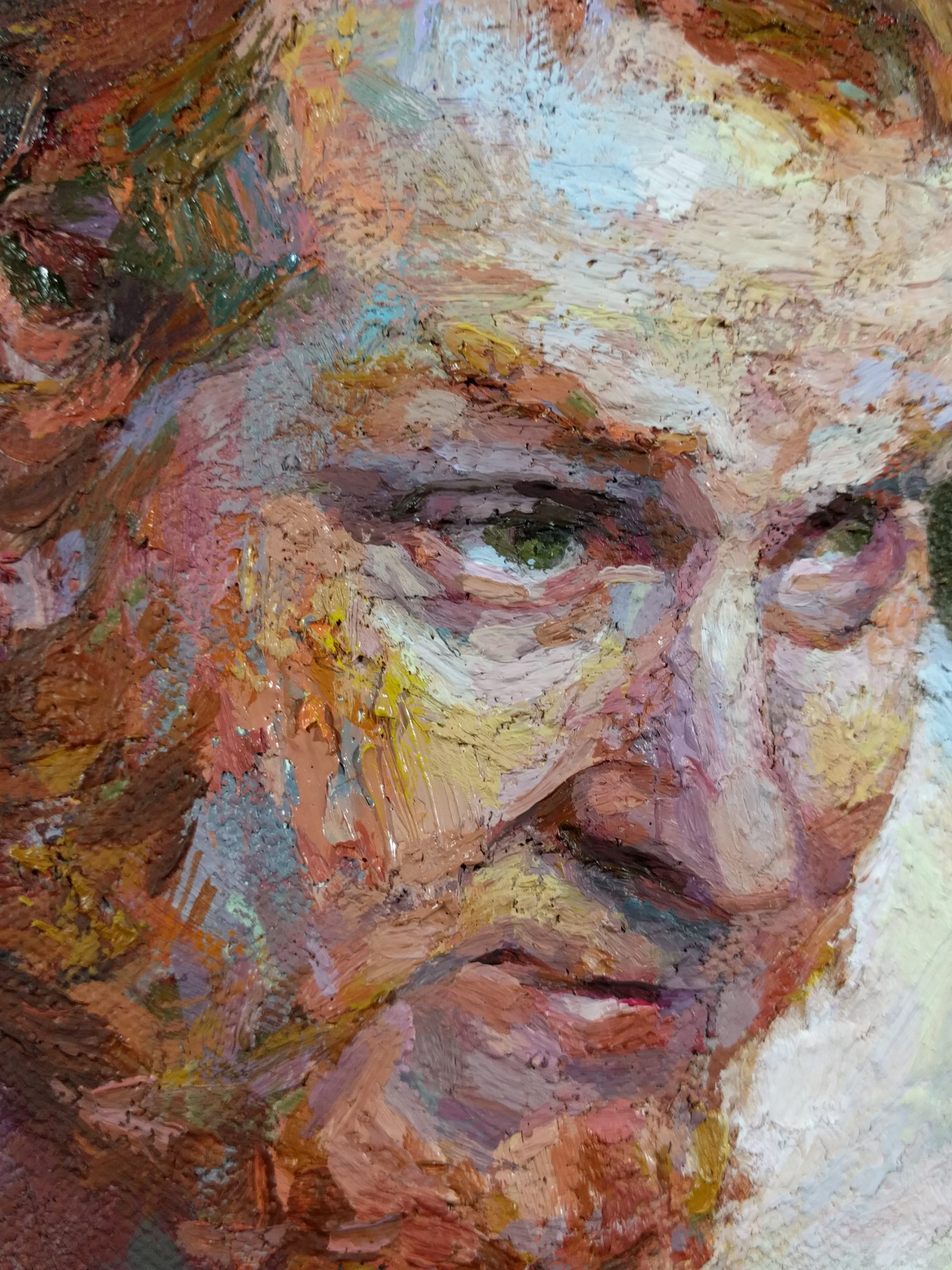Why Figurative Oil Painting Remains a Timeless Option for Artists
Why Figurative Oil Painting Remains a Timeless Option for Artists
Blog Article
The Evolution of Metaphorical Oil Paint: Comprehending Its Historical Importance and Modern Interpretations
The evolution of metaphorical oil painting serves as a compelling lens with which to examine the interaction between imaginative expression and historical context. Contemporary musicians, drawing from this rich heritage, are currently reinterpreting the human figure in means that challenge standard narratives.
Origins of Figurative Oil Paint
The beginnings of metaphorical oil painting can be traced back to the early Renaissance in Europe, specifically in the 15th century. The development of oil paint allowed for higher deepness of shade and detail, enhancing the realism and vibrancy of their job.

In this transformative age, figures were frequently portrayed within contextually rich environments, showcasing not just their physical features yet likewise their mental states. Pioneers such as Jan van Eyck and Titian utilized the medium's convenience, using layering strategies to accomplish luminance and appearance. This innovation assisted in the portrayal of intricate fabrics and the nuances of complexion, contributing to the growth of portrait and narrative scenes.
Moreover, the Renaissance emphasis on humanism fostered an appreciation for uniqueness, which consequently influenced musicians to produce more relatable and vibrant figures - figurative oil painting. Therefore, figurative oil paint emerged as an effective automobile for storytelling and psychological interaction, preparing for future creative movements and designs
Key Historic Motions
Substantial historical activities have formed the advancement of figurative oil paint, each contributing one-of-a-kind viewpoints and strategies that broadened the tool's possibilities. The Renaissance noted a turning point, emphasizing realism and the human kind, with artists like Leonardo da Vinci and Michelangelo pushing the borders of anatomical precision and perspective. Following this, the Baroque age brought dramatic contrasts of light and shadow, exhibited by Caravaggio, who infused spiritual motifs with extreme emotionality.
The 19th century introduced Romanticism and Realism, where artists such as Delacroix and Courbet tested timeless suitables, focusing on private expression and day-to-day life. The arrival of Impressionism additionally revolutionized the tool by emphasizing the impacts of light and shade, causing a departure from typical representation.
In the early 20th century, motions like Expressionism and Cubism redefined metaphorical painting through abstraction and the exploration of psychological deepness. Each of these activities not only reflected the social adjustments of their times however likewise prepared for contemporary analyses. The interaction between these historic activities has produced a rich tapestry of designs and philosophies, affecting modern-day musicians in their pursuit of recording the human experience on canvas.
Strategies and Products Advancement

Throughout the Baroque period, methods such as chiaroscuro and sfumato emerged, boosting the emotional vibration of figurative compositions. Musicians started to experiment with glazes and impasto, adjusting appearance and luminosity. By the 19th century, technologies like making use of pre-mixed paints in tubes revolutionized accessibility, allowing artists to paint en plein air and capture the short lived impacts of light.
The 20th century saw the intro of artificial pigments and mediums, which broadened the palette and changed the consistency of oil paints. The expedition of brand-new application methods, such as palette blades and brushes of differing rigidity, additional varied imaginative expression. Collectively, these developments mirror the developing connection between materials, techniques, and the artistic vision intrinsic in metaphorical oil painting.

Contemporary Analyses
Contemporary interpretations of metaphorical oil paint show a dynamic dialogue between tradition and technology, where artists test established norms and discover varied styles. This evolution materializes in various ways, as contemporary artists blend classical strategies company website with modern-day principles, often dealing with social, political, and personal stories.
Lots of practitioners attract ideas from historical works, yet they instill their pieces with contemporary viewpoints, making use of the human form as a vehicle for discourse on culture, identity, and sex. Artists significantly explore abstraction, distortion, and multimedias, which permits for a wider analysis of the number and its context.
In addition, the use of vibrant color palettes and non-traditional structures often serves to disrupt traditional viewing experiences, provoking crucial involvement from audiences. This change in emphasis extends past appearances; it shows a growing awareness of the intricacies of human experience in an interconnected world.
As metaphorical oil painting proceeds to advance, it continues to be a crucial tool for exploring the nuances of contemporary life, symbolizing both a my link regard for heritage and a dedication to dynamic thought. The result is an abundant tapestry of expression that reverberates with the complexities of the contemporary human condition.
Influence On Modern Art
The effect of figurative oil painting on contemporary art is extensive, as it has continually inspired a myriad of creative activities and practices throughout the 20th and 21st centuries. From Expressionism to Surrealism and past, the exploration of the human number has remained a main motif, allowing artists to communicate intricate emotions and stories. This emphasis on metaphorical depiction has brought about a re-examination of typical methods, leading to innovative techniques that mix realistic look with abstraction.
In addition, modern artists have embraced metaphorical oil painting as a way to attend to social and political concerns, utilizing the medium to look at here now challenge perceptions of gender, identification, and culture. The revival of interest in figurative operate in recent years mirrors a hoping for connection in a significantly digital globe, where human experience and feeling are vital.
Additionally, the dialogue between figurative oil painting and modern art is obvious in the jobs of musicians such as Kehinde Wiley and Jenny Saville, that draw on historical referrals while infusing their pieces with modern importance. Eventually, figurative oil paint proceeds to form and redefine contemporary artistic expression, emphasizing its long-lasting value in the art world.
Verdict
The advancement of figurative oil paint emphasizes its historic relevance and versatility throughout different imaginative movements. From the naturalism of the Renaissance to the stirring expressions of the Baroque and the ingenious methods of modernity, this tool has actually constantly transformed. Contemporary analyses reflect dynamic colors and unconventional structures, fostering essential involvement with social and political styles. Eventually, figurative oil painting stays an essential tool for checking out the human experience, reverberating greatly in today's electronic landscape.
The advancement of metaphorical oil painting offers as a compelling lens with which to take a look at the interaction between artistic expression and historical context.Considerable historic movements have actually shaped the advancement of figurative oil painting, each adding one-of-a-kind approaches and methods that expanded the tool's opportunities.As historic movements formed the trajectory of figurative oil painting, the techniques and products utilized by musicians have additionally undertaken significant changes. figurative oil painting.The effect of figurative oil painting on contemporary art is extensive, as it has actually continuously motivated a myriad of imaginative activities and techniques throughout the 21st and 20th centuries.The advancement of figurative oil painting underscores its historical significance and adaptability across various artistic activities
Report this page